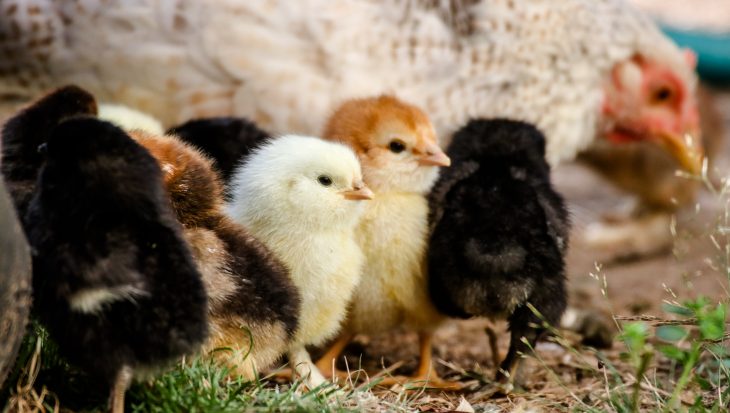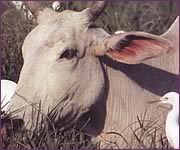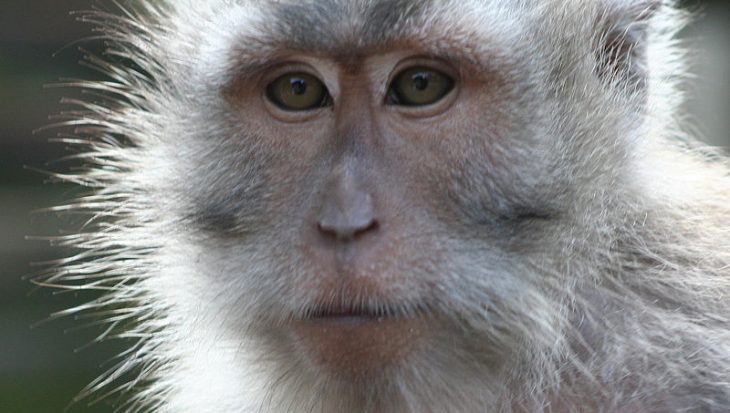Dear Andrew Tyler
Thank you for your letter of 22nd June, the press release and a copy of the Compassion in World Farming’s Report: The Global Benefits of Eating Less Meat (2004).
Send a Cow takes environmental issues extremely seriously. While you are right that farm animals can be an inefficient way of producing food and using resources, our experience is that they can also be part of a thoroughly sustainable farming system.
The work we do in Africa is having a beneficial effect not only on household nutrition and income but also on the environment. As you will know most African soils are seriously depleted and smallholder farmers cannot afford inorganic fertilisers and pesticides. Our approach is based on sustainable organic farming systems that rejuvenate the entire smallholding. Soils are preserved and improved through the use of manure, urine and composting techniques and degraded land is restored. Far from competing with humans for resources the livestock provide resources that enhance the productivity of the smallholding. The evaluation studies we have carried out show a significant improvement in household nutrition and also income from the surplus produce grown.
Regarding water, we assess carefully the availability of water before commencing any programme. In one country, Lesotho, where there is a real constraint, we have introduced simple water harvesting techniques that satisfy the agricultural needs of the smallholdings.
The animals we provide are kept in large yards with grass being brought to them. In this way manure and urine can be collected and the land is not degraded by overgrazing. The animals are more productive than large herds that range freely, often degrading the land. We believe the move towards zero grazing in Africa is a positive one that should be encouraged.
I was concerned to see Send a Cow’s name in your press release asking us to stop providing livestock: I believe this is based on lack of accurate information about our work. Our work is creating sustainable farming systems in Africa which both lift households out of poverty and improve the local environment.
I enclose an article from New Scientist which gives support to the vital work we are doing. Far from farm animals being inefficient, they help generate an efficient and sustainable system of producing food in Africa.
Martin Geake
Dear Martin Geake
Thank you for your June 30 letter.
I must report that we remain unconvinced by your advocacy of schemes that provide animals to impoverished people in Africa; nor does the article you enclosed from New Scientist provide, in our view, the ballast for your case that you suggest.
Your organisation’s initial concept was that ‘one cow can provide a family with a means out of poverty’. You now acknowledge (on your website) that this often does not hold true. ‘Young orphans cannot give them the care they need. Families living in arid areas cannot grow enough fodder for them. People with small plots of land do not have enough space.’
This is precisely right. Cows are inefficient converters of nutrients into food for human beings. They also require plenty of space to be kept healthy. Your answer is a commitment to ‘zero grazing’, which you insist on your website, is not analogous to Western-style factory farming. In fact, the arrangement you describe and promote takes the intensive farming of cattle to a level not commonly seen in this country. Cows are kept permanently in a ‘shelter’ – presumably a shed of some sort – and provided with feed in order to extract milk, dung and meat from them.
Cows kept in such deprived environments will inevitably be beset with conditions such as scours, laminitis, foot rot, mastitis and – more than likely – infestations of one sort or another. Who pays the vet bills? Where are the vets to come from? How can such an arrangement serve local people in the mid to long term when – as another animal donor charity has reported – they have encountered African cow-owning families who are spending a full three quarters of their cow-related income on feed for the animal? From the remaining one quarter must come the cost of ‘maintaining’ the animal as well as the family’s own ‘surplus’.
Your donor cow scheme involves recipients donating the first-born female to another in the circle of recipients. You do not say what happens to the non-milk-producing male calves. I should be pleased to know. I would also be pleased to hear how these cows are impregnated – with a live bull, or through Artificial Insemination (AI)? If the former, given your declared commitment to ‘zero grazing’ we must presume that these male animals will also be permanently confined and that – as with the females – they represent a major and continuing burden in terms of feeding and veterinary care. If the cows are made pregnant through AI, then that demands significant capital input, including refrigeration facilities.
As well as cows, Send A Cow (SAC) now provides goats, pigs and poultry. Reading your web literature, the presumption with respect to these animals is that they require virtually no maintenance and can ‘survive on almost any terrain’. All farmed animals require proper nourishment and that nourishment comes at an invariably inefficient cost when compared with what is possible if land were to be used to grow food directly for human consumption. These animals also require large quantities of drinking water – a precious commodity that, in much of Africa, is in critically short supply. Non-pregnant adult dairy cows require something like 50 litres of water every day. In early lactation this rises to more than 90 litres. (See http://www.quantumlynx.com/water/back/vol1no2/v12_p5x.gif). In regard to sheep and goats, some authorities recommend providing for ad lib water consumption. Others advise that an average of three litres of water be made available every day. Hot weather would require an additional 20-30% of water.
Your ‘low maintenance’ goats might be able to survive on more arid terrain than can cattle, but in this direction lies more desertification and more human impoverishment. Attempts should be made to reclaim such land for productive, drought resistant crop production.
Just such an example of land reclamation is described in the New Scientist article you provided as evidence for your own case. I refer to the ‘eroding, treeless hillsides of the drought-prone Machakis district of Kenya’. The bare hills were described as having been an appalling example of environmental degradation that generated a state of hopeless and wretched poverty amongst the local people.
The situation has now been turned around, despite years of low rainfall and a very large population increase. This has been achieved not through livestock farming but through the planting of trees and anti-erosion measures that also conserve water.
There are other examples in the New Scientist piece, relating to local people digging ditches and dams to conserve water and prevent erosion. And what also comes across powerfully – as in other literature I have been reading – is that African peoples have a dynamic and creative tradition of plant agriculture. Their outputs in terms of green vegetables, legumes, nuts and fruits are nutritional rich and there is less of the dependence on toxic fertilisers and pesticides to which we have become addicted in the ‘developed’ world.
Furthermore, African populations that do depend most heavily on livestock are the poorest of all that continent’s peoples (Coppock, L., P. Little, C. Barrett, A. Aboud. (1997) Pastoral Risk Management Project Proposal. GL-CRSP. & Thornton, P., R.L.Kruska, N.Henninger, P.M.Kristjanson,R.S.Reid, F.Atieno, A.N.Odero and T.Ndegwa (2002) Mapping Poverty and Livestock in Developing Countries. IRLI: Nairobi. ) Equally, such people use animals not primarily for meat and milk but as a source of manure and as a ‘currency’.
On this dung question, the New Scientist article referred to a cowpea producer who no longer lets his sheep roam free but keeps them permanently tethered in his backyard simply to extract manure from them. His new regime was celebrated in the article because his cowpea output increased.
Our view – and I know it will be supported by many people of all races and ethnic groups – is that keeping sentient creatures on a leash each and every day is morally unacceptable. It is equally unacceptable to confine SAC cows and bulls – or any other – in sheds for all their productive lives.
In fact, SAC is involved in poverty relief activities, in Lesotho and Uganda for instance, that we would enthusiastically support (with one proviso that I set out below).
I refer to the following:
- Keyhole (or basket) gardens. These are built around a basket of compost, which helps conserve water and supplies vital nutrients.
- Bag gardens, which are built around a sack containing manure. Many vegetables grow well in these.
- Fertility trenches, which are filled with manure and watered with household waste and diluted human urine. Potatoes and maize grow well in such trenches.
- Mulching, which means putting organic material such as leaves on the soil to conserve moisture, control weeds, enrich the soil, and protect plants from frost.
- Mini greenhouses, made from boulders and old plastic sheeting, to grow seedlings during the winter frosts and have them ready for planting out in the spring.
- Earth dams and storage tanks to conserve water.
Those who have followed these gardening guidelines, you report on your website, ‘often report amazing yields: four or five times higher than before. In northern Uganda, farmers have been able to grow fruits such as pineapples which were previously impossible.
‘Our farmers,’ you add, ‘report they have doubled or trebled their yields of fruit and vegetables. They also say they save money because they no longer need to buy commercial fertilisers or pesticides. Many are able to branch out into growing cash crops such as coffee.’
You also write of your support for Agro-forestry schemes, under which trees are grown to provide shade, and for environmental benefits such as retaining water.
All this is some distance from the simplistic Send A Cow concept. But as you point out: ‘These changes to our basic model have come about because we have listened to our local staff and beneficiaries. With their experience and ideas, we hope to find solutions to many more of the problems they face.’
Some of the projects listed immediately above involve the use of manure as a fertiliser, and it is as a provider of dung that many people in Africa most highly value in their animals.
However, there are two well-established non-animal methods of fertilising crops: through the use of green manure and treated human waste.
There are already a large number of small-scale food producers across the world who use green fertilisers, growing a variety of nutritionally rich vegetables, oilseeds, grains, soya beans and other legumes, plus soft fruits, flowers, herbs and flax.
Weed, pest and disease control can all be satisfactorily achieved.
Another source of soil fertility with enormous potential is human effluent. Many people are instinctively disgusted by the idea of using human waste, yet perfectly happy to use faeces from what they consider to be inferior animal species. Huge capital sums are expended on liquefying and treating sewage – with a consequent large and growing pollution problem.
Human waste that is kept dry and in aerated-static piles provides a rich, wholesome fertiliser. Techniques for doing so have been widely available since the 1970s, when the US Department of Agriculture revolutionised methods of recycling organic wastes. Worldwide, several schemes exist. In Shanghai by the mid 1990s, some 90 per cent of wastes were gathered from human inhabitants of the city, then treated and sold to local farmers as compost. In the UK, visitors to the toilets at the Centre for Alternative Technology in Wales all contribute to a recycling system, which – after suitable treatment – produces compost for its flowerbeds and vegetables.
Ultimately, Animal Aid’s objection is to the commercial forces that are seeking to persuade people of the poor world that their best nutritional interests are served by buying into modern, high-throughput farmed animal production processes. With that comes an addiction to high capital input systems, additional stresses on precious water supplies, environmental destruction, a loss of control over the means of production, bad health, a nightmare animal welfare scenario and more human poverty and malnourishment.
The increasing consumption of meat in Africa is already producing these depressing outcomes. Animal Aid’s objective is to do what we can to bring this issue to the public’s attention and support methods of agriculture that are rational and humane.
Andrew Tyler


